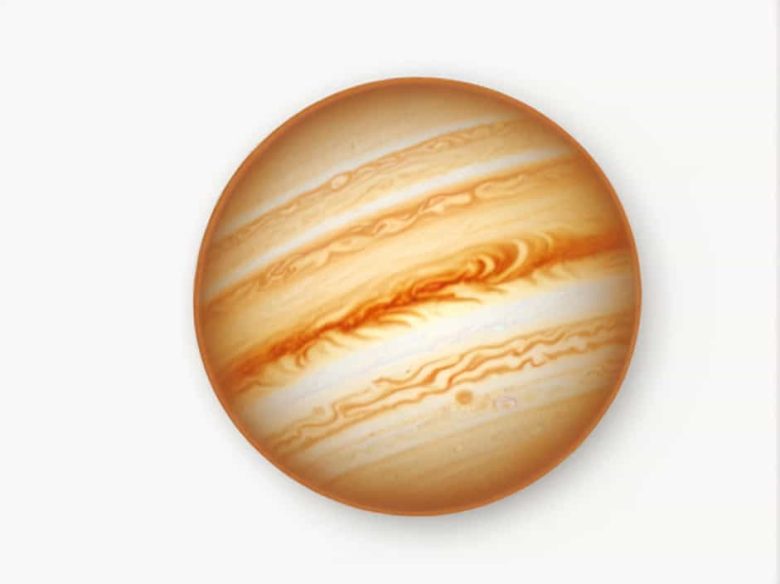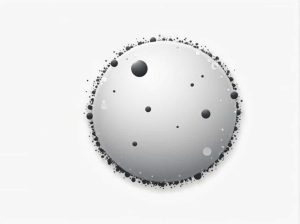Jupiter, the largest planet in our solar system, is a true giant when compared to Earth. One of the easiest ways to measure this difference is by comparing their radii. But just how many times bigger is Jupiter than Earth?
In this topic, we will explore Jupiter’s size in Earth radii, why it is so massive, and how its enormous scale impacts the solar system.
The Radius of Jupiter in Earth Radii
To compare the size of Jupiter and Earth, we use planetary radius, which is the distance from the center of a planet to its outer edge.
- Jupiter’s equatorial radius: 71,492 km
- Earth’s equatorial radius: 6,378 km
When we divide these numbers, we get:
Jupiter’s radius ≈ 11.2 Earth radii
This means that if you could place 11 Earths side by side, they would stretch across Jupiter’s diameter!
Why Is Jupiter So Large?
Jupiter’s immense size is due to several factors:
1. Formation in the Early Solar System
Jupiter formed from the gas and dust left over from the Sun’s formation. Because it was in a region with abundant material, it was able to grow much larger than Earth.
2. Its Composition
Unlike Earth, which is mostly rock and metal, Jupiter is made primarily of hydrogen and helium, the same elements that make up the Sun. These gases allow it to be enormous but not very dense.
3. Strong Gravitational Pull
Jupiter’s massive gravity has helped it collect and retain gas over billions of years, making it the largest planet in the solar system.
Comparing Jupiter’s Volume to Earth’s
Since Jupiter’s radius is 11.2 times larger than Earth’s, its volume is even greater. The formula for volume is:
V = (4/3)πr³
Applying this to Jupiter and Earth:
- Jupiter’s volume ≈ 1,321 Earths
This means you could fit more than 1,300 Earths inside Jupiter!
Jupiter vs. Earth: A Side-by-Side Comparison
| Feature | Jupiter | Earth |
|---|---|---|
| Equatorial Radius | 71,492 km | 6,378 km |
| Diameter | 142,984 km | 12,756 km |
| Volume | 1,321 Earths | 1 Earth |
| Mass | 318 Earth masses | 1 Earth mass |
| Gravity | 24.79 m/s² | 9.8 m/s² |
How Jupiter’s Size Affects the Solar System
Jupiter’s enormous size has a huge impact on the solar system:
1. Protecting Earth from Asteroids
Jupiter’s strong gravitational pull acts as a shield, deflecting many asteroids and comets that could otherwise collide with Earth.
2. Influencing the Orbits of Other Planets
Jupiter’s gravity affects the orbits of nearby planets, especially Mars and Saturn. Some scientists believe it even played a role in shaping the early solar system.
3. Hosting Dozens of Moons
Jupiter’s massive size allows it to capture and hold onto moons—it has at least 95 confirmed moons, including Ganymede, the largest moon in the solar system.
What If Jupiter Were as Small as Earth?
If Jupiter were the size of Earth, the entire solar system would look very different. Here’s what might happen:
- Jupiter’s gravity would be much weaker, possibly losing many of its moons.
- The asteroid belt might be more chaotic since Jupiter wouldn’t be able to stabilize it.
- More comets and asteroids could hit the inner planets, including Earth.
Jupiter is truly a colossal planet, with a radius 11.2 times that of Earth and a volume capable of holding over 1,300 Earths. Its immense size shapes the solar system, protecting Earth from space debris and influencing planetary orbits.
Understanding Jupiter’s scale helps us appreciate how vast and diverse our solar system is. The next time you look up at the night sky, remember: Jupiter isn’t just another planet—it’s a giant guardian of our cosmic neighborhood.



